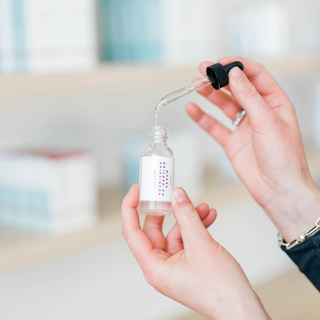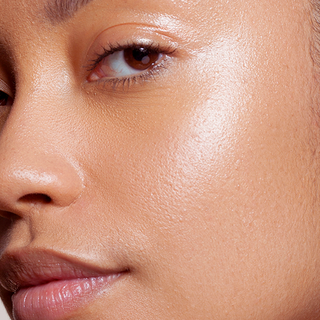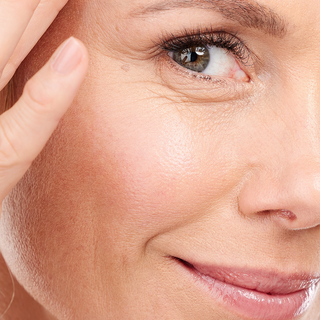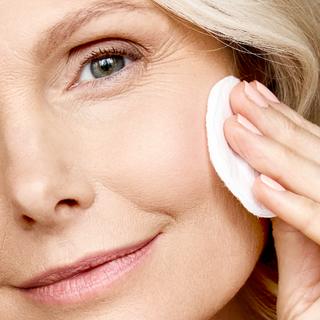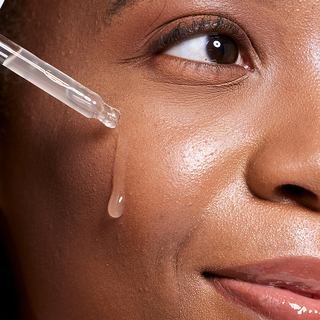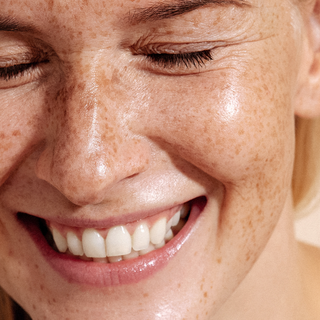If skincare feels overwhelming, you're not alone. Between creams, serums, toners, and oils, where do you even start? That’s exactly why we’re here.
Let’s demystify one of the most powerful tools in your routine: the serum.
Whether you’re curious, skeptical, or already layering up, this guide breaks it all down with clarity, empathy, and expert-backed insights from both the industry and real users.
Serum 101: What It Actually Does and Doesn’t
A well-formulated serum carries high concentrations of active ingredients directly to the deeper layers of your skin, fast. That’s its job. Unlike moisturizers that sit more on the surface to seal things in, serums are built to penetrate.
They’re the treatment step in your routine, not the comfort blanket.
What a serum actually does depends entirely on what’s inside it.
-
A Vitamin C serum? Brightens, protects, stimulates collagen.
-
A retinol-based one? Think cell turnover and softening wrinkles.
-
Hyaluronic acid? Hydration station. And for anyone struggling with breakouts,
-
Salicylic acid? A hero ingredient to help unclog pores and calm inflammation.
It’s not going to erase 10 years overnight, though, and it can’t fix everything if the rest of your routine is working against it.
But what it can do is target concerns with precision. It’s the product that makes the rest of your skincare smarter, more intentional.
Choosing The Right Serum For Your Skin Type & Concern
Finding the right serum is about understanding your skin’s needs and meeting them with targeted, effective ingredients.
Let me walk you through choosing the right serum.
Start With Your Skin Concern
Your skin isn’t one-size-fits-all, so your serum shouldn’t be either. Here’s a breakdown of what to look for based on what your skin is asking for:
|
Skin Concern |
Hero Ingredients to Look For |
|
Dryness |
Hyaluronic Acid, Peptides |
|
Acne |
Benzoyl Peroxide, Niacinamide |
|
Aging |
Retinol, Peptides |
|
Pigmentation |
Vitamin C, Kojic Acid |
|
Redness |
Ceramides, Allantoin |
💡Pro tip: If your skin tends to overreact or you’ve had bad luck with new products, always opt for fragrance-free, paraben-free serums. That’s one of the core principles I built Maria Kane around, gentle but effective skincare that doesn’t compromise your barrier just to show results fast.
Avoiding Irritation Before It Starts
One of the biggest mistakes I see? Jumping in too hard, too fast.
Especially with ingredients like retinol or exfoliating acids, more is not more. That red, tight feeling? It’s often labeled as ‘purging,’ but in reality, it’s usually a sign of overuse and not knowing how to ease into actives.
Take your time. Let your skin build trust.
My recommendation? Introduce powerful serums gradually, every other night to start, especially if it’s your first time using actives like retinol.
Can I Use The Same Serum Morning And Night?
Yes, if your serum is gentle and doesn’t include retinol or exfoliating acids.
Hydrating formulas with ingredients like hyaluronic acid, peptides, and niacinamide are typically safe for both AM and PM routines.
But anything involving active resurfacing (retinol, AHAs, etc.)? Keep those for nighttime use only. And always, always, follow with SPF during the day.
Skincare isn’t about doing more, it’s about doing what’s right. And the right serum can truly change everything when chosen wisely.
How To Use A Serum (Without Overcomplicating Your Routine)
If you're feeling overwhelmed by skincare steps, I’m here to promise you this: effective skincare doesn’t have to be complicated.
Maria Kane is built by one truth: simplicity is power. You don’t need 10 steps, just the right three.
The 3-Step Serum Routine
1. Cleanse
Start with a gentle, pH-balanced cleanser that won’t strip your skin. You’re creating a clean canvas, not battling your barrier.
Try → Soothing Peptide Cleanser or Essential Lactic Acid Cleanser
2. Apply Serum
While your skin is still slightly damp (not wet, just dewy), apply 2–3 drops max of your serum. This helps increase absorption and efficacy.
-
Pat, Don’t Rub: Use your fingertips to pat it into your face, don’t rub it like lotion. Let it soak in.
-
Wait 60 Seconds: Give it time to absorb. I know that sounds small, but it’s the difference between your serum working with your skin or just sliding under your moisturizer.
Try → Nourishing HA Peptide Serum
3. Lock It In
Follow with your moisturizer and, if it’s daytime, always finish with SPF. No exceptions.
Try → Barrier Replenishing Cream & Illuminating Beauty Balm SPF 44
My Serum Pills Under Makeup, What Am I Doing Wrong?
You’re probably layering too quickly. Let your serum breathe before moving on. Remember that skincare is a ritual, not a race.
Rushing leads to product pilling, uneven texture, and wasted benefits.
Confused About Where Serums Fit In?
Serums go after cleansing, before moisturizing, always.
Why? Because serums are thinner, and your skin absorbs them more deeply when there’s nothing heavy sitting on top.
My golden rule? Apply products from thinnest to thickest. This is non-negotiable for getting the results you’re paying for.
If you skip this step or mix things up, your actives won’t reach where they’re supposed to.
SerumVs. Moisturizer, What’s The Difference?
Let’s clear up one of the biggest sources of skincare confusion: the difference between a serum, and a moisturizer.
If they all promise glowing skin, why do we need more than one? I’ll keep it simple.
Serum: Your Everyday Skin Specialist
Serums are the workhorses of any good routine. They’re lightweight, deeply penetrating, and highly concentrated, which means they’re built to deliver real results.
Whether it’s fine lines, breakouts, or dullness, a serum goes straight to the source and does its job.
Maria Kane designs serums to be used daily. They’re not just powerful, they’re practical. Gentle enough for sensitive skin, strong enough for visible improvement.
Moisturizer: The Finishing Touch
A moisturizer is not a treatment, it’s a sealant.
It sits higher on the skin, locking in the serum you applied before and preventing water loss throughout the day or night. It's thicker, soothing, and essential, but not a substitute for what your serum delivers deep within.
Why Serums Matter More In Long-Term Routines
Serums are where science meets strategy.
They're versatile, you can layer different serums for multiple concerns. They're consistent, easy to build into your routine without adding steps. And they’re effective, when you use the right one, you’ll see the change in your skin over time.
That’s why serums are the centerpiece of Maria Kane’s skin philosophy: simple routines, real results.
Are There Any Side Effects Or Downsides?
I’m all about transparency, so let’s talk about what serums can’t do, and what they might do that makes people nervous.
Even the best formulas, like the ones we create at Maria Kane, aren’t one-size-fits-all. And yes, sometimes great skin involves a little patience.
The Reality Of Irritation
Some serums, especially those with retinol, glycolic acid, or salicylic acid, can cause dryness, tightness, or flaking in the early days.
That doesn’t mean they’re bad products; it just means your skin is adjusting to active ingredients doing their job.
💡 My advice? Start slow. Use these actives 2–3 times per week and build up. And always pair with a calming moisturizer to protect your barrier.
The Purging Phase: A Necessary Detox
This one trips up a lot of new serum users: “My skin got worse before it got better. Is this normal?”
Yes, especially if you're using acne-targeting or exfoliating serums.
This “purge” phase happens when increased cell turnover brings congestion to the surface faster than usual. It looks like breakouts, but it's temporary. Hang in there for 3–6 weeks, and don’t give up before your skin gets to the good part.
Be Careful With Ingredient Combinations
I see this mistake all the time, people layering multiple high-powered serums at once and wondering why their face is red or stinging.
It’s not your skin being sensitive, it’s your routine being too aggressive.
Never mix retinol with vitamin C or exfoliating acids in the same routine unless directed by a professional. These combinations can overwhelm even the healthiest skin.
Instead, alternate:
-
Vitamin C in the morning
-
Retinol or AHAs in the evening
And always follow up with hydration and SPF.
How To Get The Most Out Of Your Serum
From product testing to everyday conversations with people figuring out their skin, I’ve seen it all: breakthroughs, setbacks, and lessons that stick. Here’s what stands out.
1. Hydration Supercharges Your Serum
Here’s a simple trick that makes a massive difference: apply your serum to damp skin.
Damp skin acts like a sponge, pulling those active ingredients deeper. This is especially powerful with hydrating ingredients like hyaluronic acid, it actually draws water into the skin and holds it there.
Maria’s Tip: Right after cleansing, lightly pat your face with a towel, but not too dry. Then go in with your serum. You’ll feel the difference immediately.
2. Start Slow With Strong Actives
Retinol, acids, even potent Vitamin C, these are heavy hitters. But more isn’t more.
Ease into it.
Start with two nights a week, then three. Give your skin a chance to build tolerance without backlash. At Maria Kane, we often layer in calming ingredients like niacinamide to buffer actives and protect your barrier (hello, Nourishing HA Peptide Serum!).
3. Never Skip SPF
This is non-negotiable. If you’re using active serums, especially exfoliants, retinol, or brightening ingredients like Vitamin C, your skin becomes more vulnerable to sun damage. SPF is your shield.
No SPF = No Results
Trust me: you don’t want to invest in good skincare just to reverse it with UV exposure.
4. Serums Are Not One-Size-Fits-All
This might be the most important lesson: what works for your friend’s glow might not work for yours.
Your skin has its own needs, triggers, and sensitivities. Some people love a serum with essential oils; for others, it’s a recipe for redness.
→ Quick Reality Check
“I used a $90 serum and saw no results.”
Here’s the truth: price does not equal performance.
A luxury label doesn’t guarantee results, ingredients do. Look at the formula, not the marketing. That’s why Maria Kane focuses on clinical-grade actives and real efficacy: to be the skincare that earns its place on your shelf.
Spotlight On: Maria Kane’s High-Performance Serums
Skincare should feel like a solution, not a second job.
That’s why I created the Maria Kane line, to offer science-backed simplicity without compromising on performance. These aren’t just products.
They’re results in a bottle, made for real skin, real life, and real transformation. Targeted, medical-grade formulas that don’t overcomplicate or overwhelm.
1. Nourishing HA Peptide Serum
For: Dry, aging, or sensitive skin
Key Actives: Hyaluronic acid, niacinamide, peptides
Benefit: Deep hydration, plumping, firmness, and barrier repair
This is our best-selling multitasker and my personal go-to. It's the serum I recommend to almost everyone starting out.
Why? Because it hydrates and strengthens without irritation, making it the perfect entry point into smart skincare.
2. Brightening CE Ferulic Serum
For: Dullness, uneven tone, sun damage
Key Actives: Vitamin C, Vitamin E, Ferulic Acid
Benefit: Brightens skin, evens complexion, protects from environmental stress
If your skin feels tired or lacks radiance, this is your daily pick-me-up. It doesn’t just fade dark spots, it helps prevent future ones by shielding your skin from oxidative stress.
Use it in the morning, always follow with SPF, and watch your skin start to glow with consistency.
3. Clarifying Complexion Serum
For: Oily, acne-prone, or congested skin
Key Actives: Bezoyl peroxide, glycolic acid
Benefit: Clears pores, calms inflammation, smooths and evens skin texture
This one’s your breakout bouncer. But unlike harsh acne treatments that dry your skin out, it keeps the peace, balancing oil, reducing redness, and improving texture without the flakiness.
It’s also a great "spot serum" for oily T-zones or hormonal flare-ups.
Is A Serum Worth Adding To Your Routine?
Absolutely. Serums are more than just skincare, they’re smart skincare.
They allow you to address your skin’s needs with precision, power, and purpose. Whether that fits, not one designed for the masses, but one made just for you.
And when you choose a brand like Maria Kane, you’re not just picking a pretty bottle, you’re partnering with a philosophy rooted in clinical-grade quality, radical simplicity, and real-life results.
Here, every drop is deliberate. These serums don’t just sit pretty on your counter, they earn their place through performance.
Our mission is to simplify skincare while maximizing what matters: your confidence, your time, and your glow.
✨ Let your skin be your statement. Glow on, confidently.

